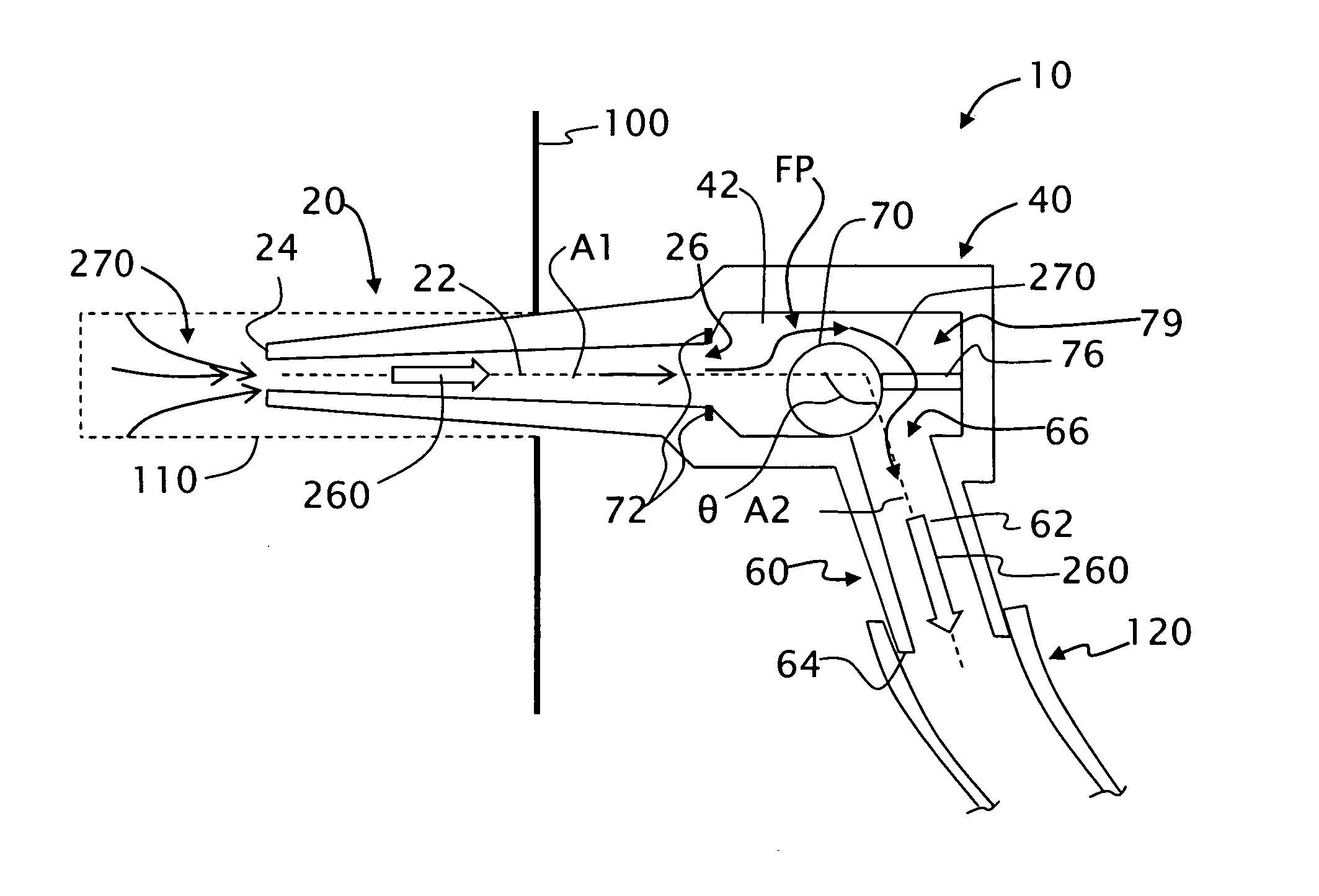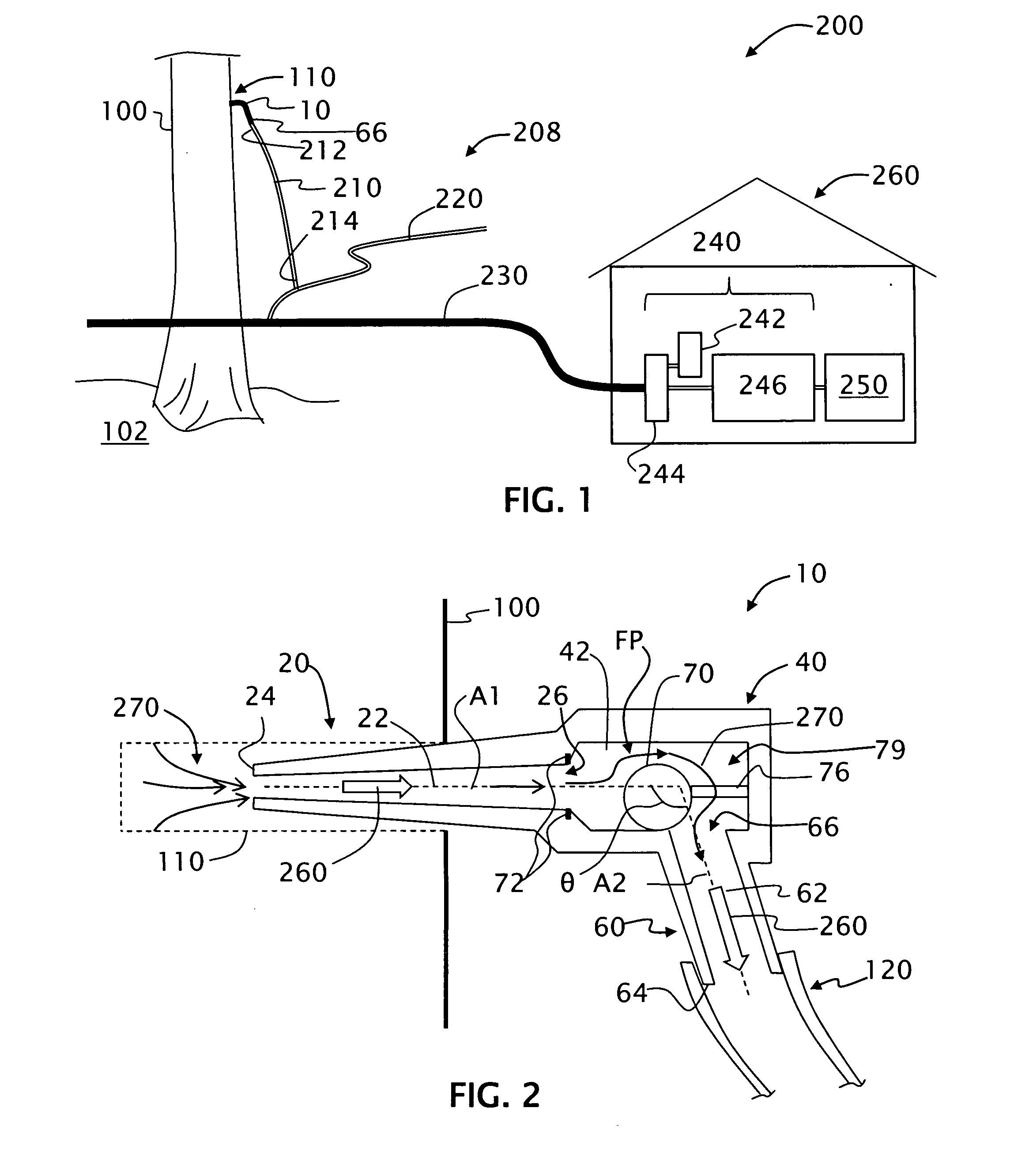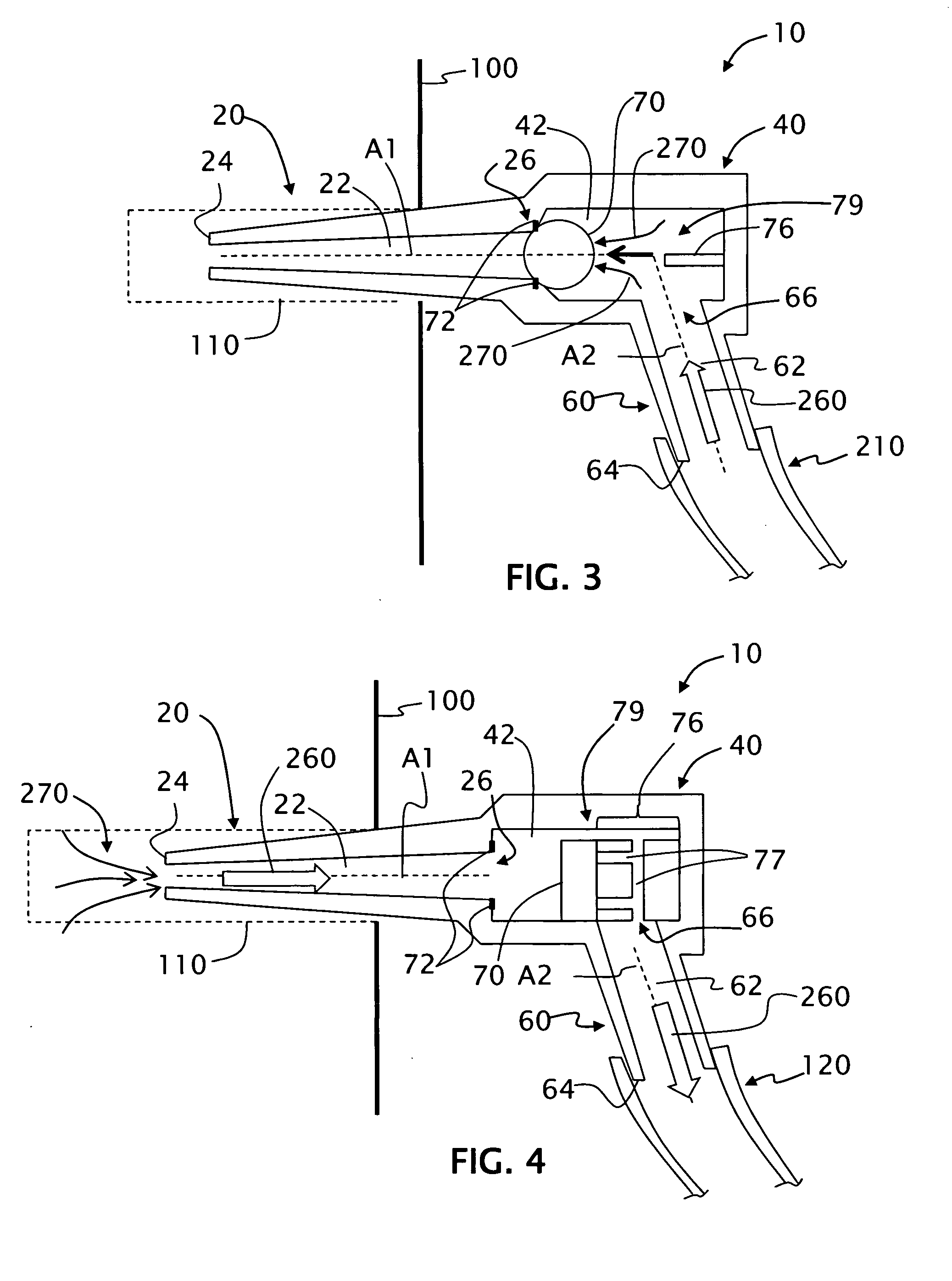Maple spout with interior chamber and maple syrup production system using same
a technology of maple syrup and spout, which is applied in the direction of mechanical equipment, functional valve types, seeds and root treatment, etc., can solve the problems of reducing sap yield, reducing vacuum transfer to the taphole, and reducing sap movement, so as to reduce vacuum transfer, reduce sap yield, and reduce movement
- Summary
- Abstract
- Description
- Claims
- Application Information
AI Technical Summary
Benefits of technology
Problems solved by technology
Method used
Image
Examples
Embodiment Construction
[0026]In the description below, the term “fluidly connected” generally includes techniques known in the art of maple syrup production to connect fluid-carrying parts of the production system so that fluid can flow between or through the parts. An exemplary fluid connection technique is a “press fit,” where the end of one part (e.g., a drop line 210, described below) is slid over and pressed onto the end of another part (e.g., a fitting 330 with ridges 332, as described below) to provide a snug fit that is water-tight and vacuum tight. Other fluid connection techniques that are available employ threaded parts or snap-fit parts. However, the present invention is described below using the “press fit” connection technique because it is presently the most widely accepted connection technique in the maple syrup industry.
[0027]Also, while the present invention works well with 5 / 16″ inside diameter (ID) lines (i.e., drop line, lateral lines, etc.), it also works with larger-diameter lines a...
PUM
 Login to View More
Login to View More Abstract
Description
Claims
Application Information
 Login to View More
Login to View More - R&D
- Intellectual Property
- Life Sciences
- Materials
- Tech Scout
- Unparalleled Data Quality
- Higher Quality Content
- 60% Fewer Hallucinations
Browse by: Latest US Patents, China's latest patents, Technical Efficacy Thesaurus, Application Domain, Technology Topic, Popular Technical Reports.
© 2025 PatSnap. All rights reserved.Legal|Privacy policy|Modern Slavery Act Transparency Statement|Sitemap|About US| Contact US: help@patsnap.com



